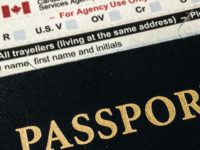The Supreme Court of Canada has issued a landmark decision concluding that text messages may attract a reasonable expectation of privacy even after they have been sent and received. The case recognizes the importance of electronic communications and the privacy implications of electronic messaging, establishing a standard that is likely to have a significant impact on investigations across the country. Further, the court’s emphasis on a functional approach to privacy in the digital world could have implications that extend well beyond conventional text messaging. The court was divided on the issue: four judges comprised the majority (written by Chief Justice McLachlin), Justice Rowe concurred, and Justice Moldaver wrote a dissent (joined by Justice Cote). The court also released a second decision today involving text messaging which examined the intercept provisions that will be the subject of a future post.
The heart of the case was characterized by the majority in the very first paragraph:
Can Canadians ever reasonably expect the text messages they send to remain private, even after the messages have reached their destination? Or is the state free, regardless of the circumstances, to access text messages from a recipient’s device without a warrant? The question in this appeal is whether the guarantee against unreasonable search and seizure in s. 8 of the Canadian Charter of Rights and Freedoms can ever apply to such messages.











